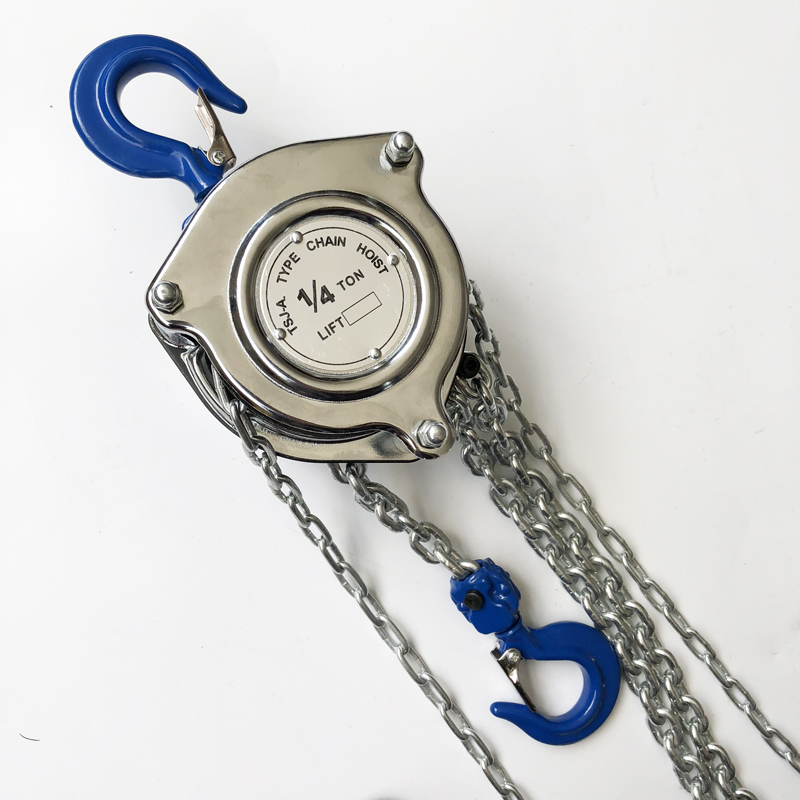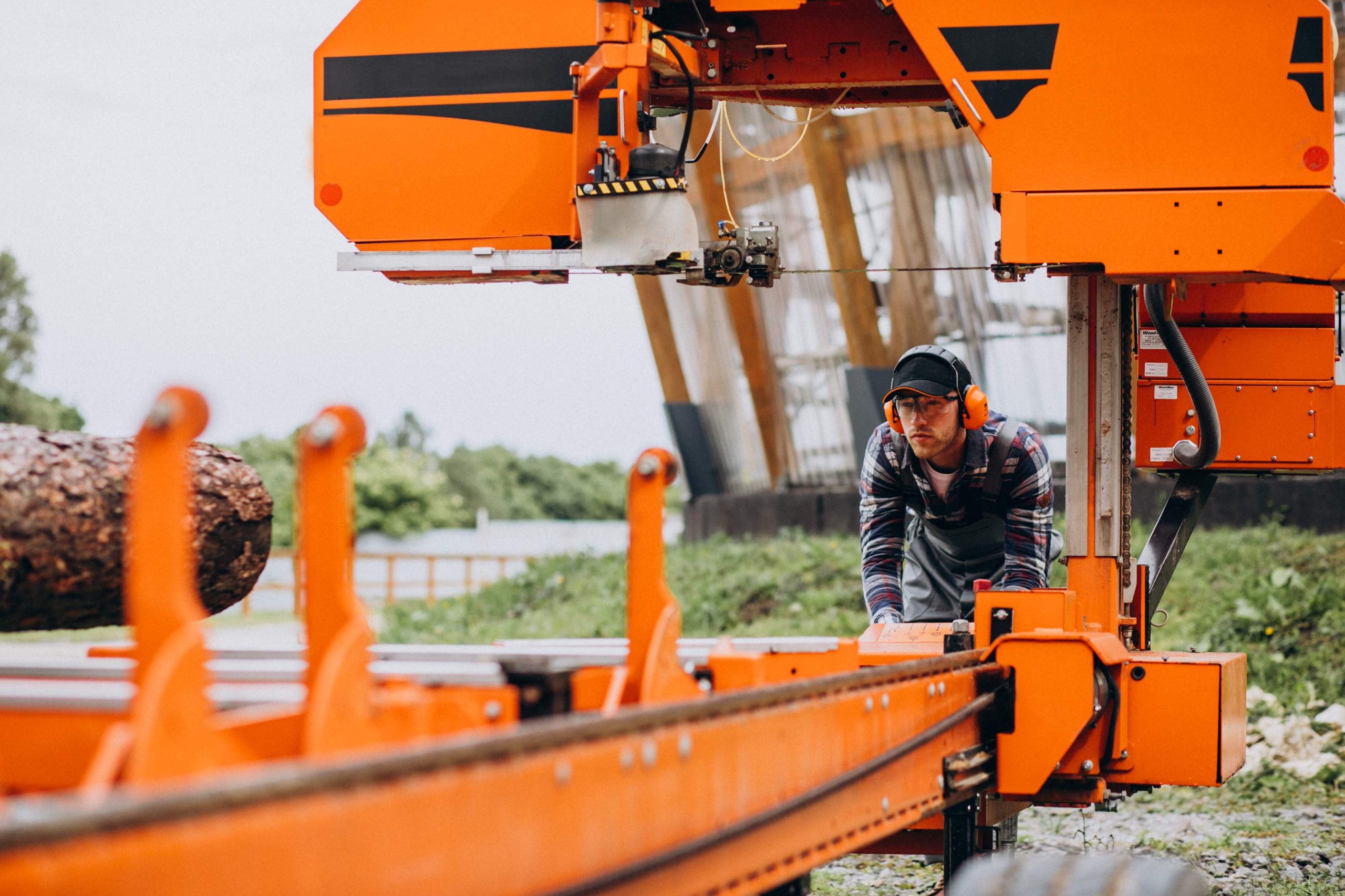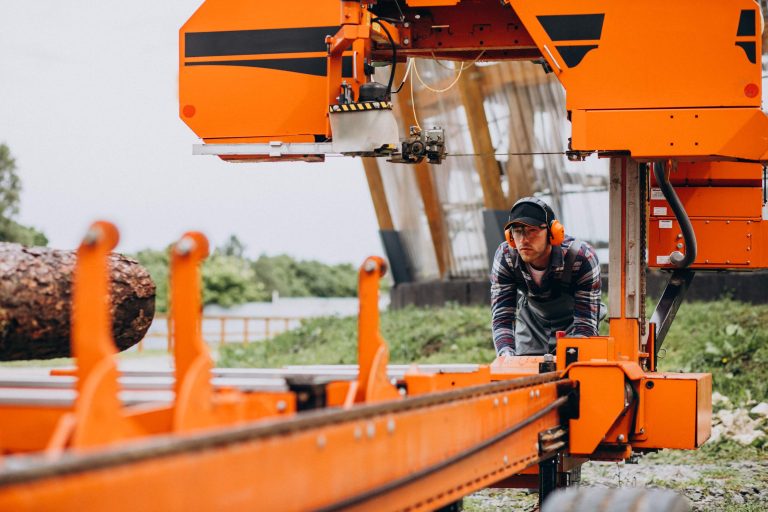Industrial chain hoists are available in manual as well as electric hoists and the decision between the 2 hoists primarily relies on the nature of the lifting application. Choosing between manual chain hoists and electric chain hoists will depend on the long-term maintenance and operational needs versus the initial investment as there are trade-offs to each type of material handling solution.
Key Features of Chain Hoists
Characteristics of Manual Chain Hoists
A manual chain hoist is a mechanically operated device that is powered by hand to lift, lower, or move heavy loads. The lifting mechanism is activated through a chain pulley system and the user needs to pull a chain to operate it.
Hoists of this kind can be used in remote locations and those areas where no power supply is available. They are basic, inexpensive and good for light to moderate lifting. Since there are no electronic parts, manual chain hoists are also considered to be very durable as well as resistant to extreme working conditions.
Characteristics of Electric Chain Hoists
Electric chain hoists are a type of electric motor used to lift loads. They function for productivity use and can bear larger masses compared to manual hoists. Control over speed and protection against overload not only exist in these hoists but also improve safety and accuracy while operating them.
Electric chain hoists are primarily used in industries where products need to be lifted intermittently or continuously. They alleviate manual wear and tear and expedite processes to such an extent that they are practically integral in a high-demand setting.
Comparing Manual and Electric Chain Hoists
Efficiency and Performance Differences
Electric chain hoists are faster than manual versions, and they can also lift heavier loads. Here are some options for hoists, such as manual, which requires muscle, or electric, which are ideal for consistent performance. With the electric hoists, we can be more efficient, especially for some repetitive jobs, or heavy-duty applications.
Cost Considerations
Electric chain hoists are pricier than manual chain hoists due to their more complicated design, which includes multiple electrical components. Electric chain hoists have a higher initial cost; however, they are more productive than non-electric hoists and will contribute to lower casting costs (after time).
Maintenance Requirements
They have fewer moving parts, so they require very low maintenance, compared to their counterparts. They only need regular lubrication and some checking to stay running. Compared to manual ones, electric chain hoists require more maintenance attention by qualified technicians, due to the electric motors and electrical systems.
Suitability for Various Applications
Which applications are manual hoists good at? Manual hoists shine in situations where portability and simplicity take precedence, right at construction sites or at temporary installations. Electric chain hoists are ideal for industrial purposes that require high productivity, such as manufacturing plants or warehouses.
Recommendations for Industrial Use
Selecting the Right Hoist Based on Operational Needs
Choosing between a manual and an electric chain hoist depends on your specific requirements, including load capacity, frequency of use, budget constraints, and work environment.
Factors to Consider in Choosing a Manual Chain Hoist
A manual chain hoist is suitable for infrequent lifting jobs or little-used operations in remote locations where electricity can not be reached. When choosing a manual version, keep in mind the following: load weight (usually no more than 5 tons), ease of transportation, and simplicity of use.

Factors to Consider in Choosing an Electric Chain Hoist
If you have a high-volume application and need to rely on your hoist day in and day out, buy an electric chain hoist. These include: motor power rating, speed control features, safety features like overload protection and compatibility with the existing infrastructure.
If you’re looking for reliable solutions tailored to your needs, explore APOLLO‘s range of high-performance lifting equipment. Their products combine innovation with reliability to meet diverse industrial demands efficiently.
APOLLO’s Product Offerings in Chain Hoists
Features and Benefits of APOLLO Manual Chain Hoists
Manual chain hoists are essential gear and devices for industries that need energy-independent, portable, and reliable lifting solutions. These hoists have no dependence on electricity as these hoists use a chain pulley system, which is hand-operated to lift and down heavy loads.
This also keeps the design simple, easy to use, and saves weight, but they are still rugged and survive almost any condition. Built with durable materials and minimal moving parts, these are perfect for places where access to perform maintenance or direct sunlight and humidity may affect your electronic devices.
These are extremely lightweight and compact, which makes them easy to transport and set up. This is especially useful for temporary worksites or remote locations. Moreover, manual chain hoists are relatively inexpensive equipment that provides a great overall deal for light and medium weight lifts without the lax safety standards.
Features and Benefits of APOLLO Electric Chain Hoists
For industrial lifting requirements, electric chain hoists mark a step up in productivity and performance. Outfitted with powerful electric motors, these hoists are capable of lifting loads that weigh far more than what a manual model could effectively handle.
Designed for high-frequency operations, they are perfect for manufacturing plants, warehouses, and other industrial locations where lifting needs to be repetitive.
Other features such as variable-speed variable-frequency drive are being used to allow operators to set the lifting speed depending on particular needs. It also improves productivity and safety by allowing for accurate positioning of the load.
Robust safety features such as overload protection systems also protect against damage caused by excessive loads, ensuring threat-free operation. Besides, the ergonomic design minimizes the risk factor that the workers endure while working as such ensuring a safe work environment.
Why Choose APOLLO for Industrial Chain Hoists?
Reliability and performance are critical requirements to consider in the selection of industrial chain hoists. APOLLO has become a household name in the industry for providing innovative solutions that cater to the varied requirements of maintaining efficient operations. APOLLO has become an industry leader in providing cutting-edge solutions with the capabilities to meet all operational needs.
APOLLO, a trusted name in engineering excellence and customer satisfaction, brings to you a wide range of manual and electric chain hoists for many applications. All their products are tested to satisfy International safety standards, paired with high functionality to withstand harsh conditions.
They test their products to international standards for safety, and high performance characteristics in real-world conditions. Whether you prefer a manual hoist or an electric model for heavy-duty tasks, APOLLO has your needs covered with maximum reliability and efficiency.
FAQs
Q1: What should I look out for when deciding between manual and electric chain hoists?
A: Determine your operational needs as you have to assess the load capacity, operating hours, budget, and work environment among others. Manual hoists can be used for portability or small jobs, while electric hoists excel in high-frequency industrial applications.
Q2: Can electric chain hoists be used outdoors?
A: Yes, but you must check their IP rating or get models with protective enclosures before installing outside.
Q3: How often should you have the equipment inspected?
A: Every 3-6 months, depending on the frequency of use, should be sufficient for everything to run at optimal and safe levels.


